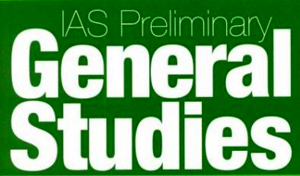60 Days to Crack Prelims - Base Level Preparation Strategy for General Studies
Sakshi Education

Preliminary stage of examinations for civil services of India is notified for August 24th this year and there is only about two months remaining!!!
Time to panic, isn’t it?
Let me tell you that it is not the moment to ambushed by waves of panic and to get thrown out of the race, but it is the last chance you have to strategise to come out successful. Preparation for civil services is too vast and to be done in two months as it encompasses wide realms of knowledge and needs an understanding of almost everything under the Sun.
But, it is possible to crack the preliminary exam with two months of preparation if you are planned, focused and willing to work.
The intention of this write up is to guide you through the process of planning for the ‘60 Days to Crack Prelims’.

Understanding the exam
The success of any plan depends on understanding the objectives and identifying the possible paths to attain those goals. To understand your goal in prelims you have to know what all are covered by syllabus of prelims, what is the pattern and weightage for each part and what should be the aim to get through.
Aptitude part, a real test
All of you know that Civil Services Aptitude Test(CSAT) aka preliminary examinations consists of two papers, conducted on the same day, one in the forenoon and other in the afternoon. The first paper or CSAT Paper 1 is considered the paper of conventional general studies while the CSAT Paper 2 is aptitude part considered real CSAT by experts.
NCERT text books, Knowledge Bank for GS
For any examination we need some basic level of knowledge to be just in race and that basic set of knowledge for General Studies is nothing but NCERT text books which you had studied back in school. But most of us mugged up NCERT books, or sample answers provided by our teachers, repeated the same in answer sheet when question came up, without understanding what all those things mean and how those things in the book affects our life. Now is the time to redo those NCERT books with better understanding, with and insight about everything around us and how the surroundings influence our lives.
Concentrate on History, more than others
History of India and Indian National Movement is one of the important parts of syllabus for Civil Services Prelims. History of India includes evolution of cultural aspects of Indian society as a whole. The History can be divided into three parts, History of Ancient India, History of Medieval India, and History of Modern India.
If you carefully analyse the pattern of previous years you can see that most of the questions in this subject is from Modern Indian History in General and Indian National Movement in particular. So concentrate on this part more than others. I would like to suggest you to go through 1989 edition of NCERT book ‘Modern India’ for 8th standard to tackle the questions from this part.
The other aspect of History which presents itself as culture is also gaining importance and most of it can be managed by 1978 edition of NCERT book ‘Ancient India for 6th class and 1988 edition of NCERT book ‘Medieval India for 7th class.
New NCERT books Themes in History Part I, Themes in History Part II, and Themes in History Part III for class 12th can also help if you cannot find the old edition books.
Atlas - essential for Geography
Next part of GS includes Indian and World Geography. They have specified that this part includes Physical, Social, Economic Geography of India and the World. Geography of the world is covered by NCERT books for class 6th (1987 edition), 7th (1994 edition) and 8th (1989 edition). These books have Physical Geography covered in first units and individual continents covered in the remaining units. Keep an atlas with you while you study geography so that you can mark the important places, areas etc to get information on locations. Indian Geography needed for prelims is covered by 10th class NCERT 2000 edition book.
New edition of NCERT Books cover less for the exam
New edition NCERTs Resource and Development for 8th class, and Fundamentals of Physical Geography for 11th class may help you for handling the questions related to physical geography, while 9th Class book ‘Contemporary India’’ helps you to manage the questions related to Indian Geography along with Indian Physical Environment for 11th class book. Unfortunately none of the new edition books cover world geography as much as the exam demands.
Those who are fast in reading may additionally go for Resource and Development 8th class, Contemporary India Part II for 10th class and India - People and Economy for 12th class for more insight and better position.
Indian Polity and Governance
The third part of GS syllabus includes Indian Polity and Governance with emphasis on Constitution, Political System, Panchayati Raj, Public Policy, Rights Issues, etc. Democratic Politics Part I for 9th class and Democratic Politics Part II for 10th class along with Indian constitution at work for 11th class should give you sufficient framework for polity.
Economic and Social Development- An inevitable part of preparation
Understanding ‘Economic and Social Development’ of the country is an inevitable part of preparation for this examination where you have to know about Sustainable Development, Poverty, Inclusion, Demographics, Social Sector Initiatives etc. Economics book for class 9th will give you an understanding of the subject in general while Understanding Economic Development for class 10th will give you deeper understanding of the concepts. Indian Economic Development for 11th class is the most important book for this subject which will provide you with specific knowledge needed to handle the questions posed by UPSC.
9th and 10th Class NCERT books for General Science
The paper I of preliminary exam also poses some questions from General Science. Most of these questions can be faced by information from 9th and 10th Class NCERT books of Science. For people from science background, you may be able to handle most of the questions without any special study if you have a grasp of what you have already studied.
Current Affairs questions can be predicted
Current events of national and international importance popularly known as current affairs is the part of this exam that haunts the candidates like anything. People who are observing from outside says anything under the sun can figure in this examination. Fortunately it is not that much wide. Most of the current affairs related questions can be predicted if the student has a grasp of basic subjects and regular habit of reading newspapers.
Have a museum of previous one year national dailies
Most of the questions comes from the issues which occupied the first page of national dailies in previous one year or related to those issues which were repeated many times in the newspapers due to its significance. If you have a museum of previous one year national dailies, its good.
But we cannot expect people to keep past year’s newspapers. The alternative is to read any current affairs roundup available in the market in a book form. What the publishers do is to collect the news items regularly and compile them into a book at end of the year. So most of them will be having almost the same contents and whichever you follow gives the same results. Another option is to go through the prominent current affairs magazines.
Take help of online or offline media
General issues on Environmental Ecology, Bio-diversity and Climate Change though mentioned in syllabus separately, should be considered a part of current affairs and dealt with in similar manner. Some research into background of issues with help of online or offline media may also help you to improve understanding.
Thus the base level preparation for Civil Services Prelims GS Paper will keep you in the race, but to reach a safe position ultimately we need advanced preparation in the last month. Hence the base level should be completed in 40 to 45 days without ignoring the basic level for CSAT paper II.
60 Days to Crack Prelims - Base Level Preparation Strategy for CSAT Paper II
Time to panic, isn’t it?
Let me tell you that it is not the moment to ambushed by waves of panic and to get thrown out of the race, but it is the last chance you have to strategise to come out successful. Preparation for civil services is too vast and to be done in two months as it encompasses wide realms of knowledge and needs an understanding of almost everything under the Sun.
But, it is possible to crack the preliminary exam with two months of preparation if you are planned, focused and willing to work.
The intention of this write up is to guide you through the process of planning for the ‘60 Days to Crack Prelims’.

Understanding the exam
The success of any plan depends on understanding the objectives and identifying the possible paths to attain those goals. To understand your goal in prelims you have to know what all are covered by syllabus of prelims, what is the pattern and weightage for each part and what should be the aim to get through.
Aptitude part, a real test
All of you know that Civil Services Aptitude Test(CSAT) aka preliminary examinations consists of two papers, conducted on the same day, one in the forenoon and other in the afternoon. The first paper or CSAT Paper 1 is considered the paper of conventional general studies while the CSAT Paper 2 is aptitude part considered real CSAT by experts.
NCERT text books, Knowledge Bank for GS
For any examination we need some basic level of knowledge to be just in race and that basic set of knowledge for General Studies is nothing but NCERT text books which you had studied back in school. But most of us mugged up NCERT books, or sample answers provided by our teachers, repeated the same in answer sheet when question came up, without understanding what all those things mean and how those things in the book affects our life. Now is the time to redo those NCERT books with better understanding, with and insight about everything around us and how the surroundings influence our lives.
Concentrate on History, more than others
History of India and Indian National Movement is one of the important parts of syllabus for Civil Services Prelims. History of India includes evolution of cultural aspects of Indian society as a whole. The History can be divided into three parts, History of Ancient India, History of Medieval India, and History of Modern India.
If you carefully analyse the pattern of previous years you can see that most of the questions in this subject is from Modern Indian History in General and Indian National Movement in particular. So concentrate on this part more than others. I would like to suggest you to go through 1989 edition of NCERT book ‘Modern India’ for 8th standard to tackle the questions from this part.
The other aspect of History which presents itself as culture is also gaining importance and most of it can be managed by 1978 edition of NCERT book ‘Ancient India for 6th class and 1988 edition of NCERT book ‘Medieval India for 7th class.
New NCERT books Themes in History Part I, Themes in History Part II, and Themes in History Part III for class 12th can also help if you cannot find the old edition books.
Atlas - essential for Geography
Next part of GS includes Indian and World Geography. They have specified that this part includes Physical, Social, Economic Geography of India and the World. Geography of the world is covered by NCERT books for class 6th (1987 edition), 7th (1994 edition) and 8th (1989 edition). These books have Physical Geography covered in first units and individual continents covered in the remaining units. Keep an atlas with you while you study geography so that you can mark the important places, areas etc to get information on locations. Indian Geography needed for prelims is covered by 10th class NCERT 2000 edition book.
New edition of NCERT Books cover less for the exam
New edition NCERTs Resource and Development for 8th class, and Fundamentals of Physical Geography for 11th class may help you for handling the questions related to physical geography, while 9th Class book ‘Contemporary India’’ helps you to manage the questions related to Indian Geography along with Indian Physical Environment for 11th class book. Unfortunately none of the new edition books cover world geography as much as the exam demands.
Those who are fast in reading may additionally go for Resource and Development 8th class, Contemporary India Part II for 10th class and India - People and Economy for 12th class for more insight and better position.
Indian Polity and Governance
The third part of GS syllabus includes Indian Polity and Governance with emphasis on Constitution, Political System, Panchayati Raj, Public Policy, Rights Issues, etc. Democratic Politics Part I for 9th class and Democratic Politics Part II for 10th class along with Indian constitution at work for 11th class should give you sufficient framework for polity.
Economic and Social Development- An inevitable part of preparation
Understanding ‘Economic and Social Development’ of the country is an inevitable part of preparation for this examination where you have to know about Sustainable Development, Poverty, Inclusion, Demographics, Social Sector Initiatives etc. Economics book for class 9th will give you an understanding of the subject in general while Understanding Economic Development for class 10th will give you deeper understanding of the concepts. Indian Economic Development for 11th class is the most important book for this subject which will provide you with specific knowledge needed to handle the questions posed by UPSC.
9th and 10th Class NCERT books for General Science
The paper I of preliminary exam also poses some questions from General Science. Most of these questions can be faced by information from 9th and 10th Class NCERT books of Science. For people from science background, you may be able to handle most of the questions without any special study if you have a grasp of what you have already studied.
Current Affairs questions can be predicted
Current events of national and international importance popularly known as current affairs is the part of this exam that haunts the candidates like anything. People who are observing from outside says anything under the sun can figure in this examination. Fortunately it is not that much wide. Most of the current affairs related questions can be predicted if the student has a grasp of basic subjects and regular habit of reading newspapers.
Have a museum of previous one year national dailies
Most of the questions comes from the issues which occupied the first page of national dailies in previous one year or related to those issues which were repeated many times in the newspapers due to its significance. If you have a museum of previous one year national dailies, its good.
But we cannot expect people to keep past year’s newspapers. The alternative is to read any current affairs roundup available in the market in a book form. What the publishers do is to collect the news items regularly and compile them into a book at end of the year. So most of them will be having almost the same contents and whichever you follow gives the same results. Another option is to go through the prominent current affairs magazines.
Take help of online or offline media
General issues on Environmental Ecology, Bio-diversity and Climate Change though mentioned in syllabus separately, should be considered a part of current affairs and dealt with in similar manner. Some research into background of issues with help of online or offline media may also help you to improve understanding.
Thus the base level preparation for Civil Services Prelims GS Paper will keep you in the race, but to reach a safe position ultimately we need advanced preparation in the last month. Hence the base level should be completed in 40 to 45 days without ignoring the basic level for CSAT paper II.
60 Days to Crack Prelims - Base Level Preparation Strategy for CSAT Paper II
Published date : 18 Jun 2014 04:28PM






